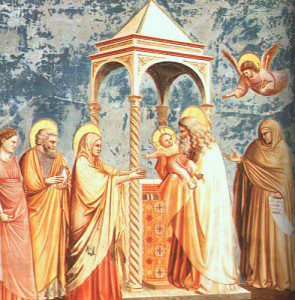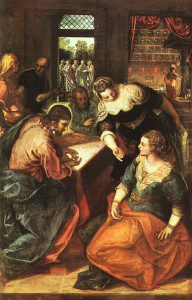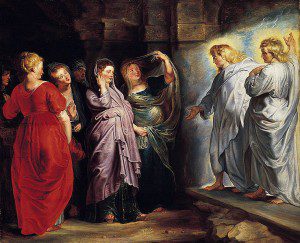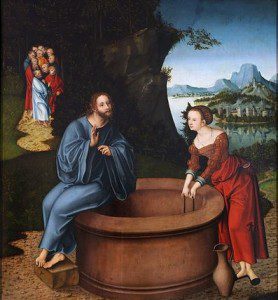 I am in the middle of a series looking at the questions that surround both biblical womanhood and women in leadership roles. The first two posts in the series looked at the variety of things that women are described as doing in both the Old and the New Testaments (Biblical Womanhood … Not What Many Think and Biblical Womanhood … The New Testament). These range from the “expected” roles of wife and mother to judge, prophet, builder, business women, evangelist, one-on-one teacher, witness, student. We can argue, as one commenter did at length, that a woman is a prophetess rather than a prophet – but it doesn’t appear to be a difference in role, calling, or office, rather it is a distinction of gendered language.
I am in the middle of a series looking at the questions that surround both biblical womanhood and women in leadership roles. The first two posts in the series looked at the variety of things that women are described as doing in both the Old and the New Testaments (Biblical Womanhood … Not What Many Think and Biblical Womanhood … The New Testament). These range from the “expected” roles of wife and mother to judge, prophet, builder, business women, evangelist, one-on-one teacher, witness, student. We can argue, as one commenter did at length, that a woman is a prophetess rather than a prophet – but it doesn’t appear to be a difference in role, calling, or office, rather it is a distinction of gendered language.
The third post in the series considered the question of authority and authoritarianism in the teaching of Jesus and the New Testament portrayal of the church (All Authority in Heaven and on Earth). My contention is that our only true authority is God, with all authority given to Jesus. As humans we are brothers and sisters who stand before Christ. There is no hierarchical mediation before him. A late commenter on this post made an important point worth repeating here.
Way late here (somehow missed this post). But, loved the final paragraph on the desire for authority. One observation on 1 Tim. 2:11-12 – that your post points toward – that I think is worth articulating more specifically to that singular text is that neither male nor female are given the right to have authority over (really, the best meaning is likely “to domineer”). It’s not just a prohibition against women taking a position that men occupy. No one, male or female, [is] given the right to domineer over another. That indicates that Paul is simply expressing a concern about women seeking to do that in that particular context. But, as you point out, Jesus’ instructions in Mt. 20, 23, indicate that there is not to be any real hierarchy among his people.
I think this is very much the case with elders/bishops. The leader is to be the one who serves; who follows the pattern of Christ in Phil. 2:6-8 (cf. 1Pet. 2:21-25). Interestingly, the one time Paul specifically addresses bishops and deacons is in the Philippian letter – which means they are called specifically to emulate the descending humility, self-emptying and humiliation of the cross. There is no domination, no power over, no coercive action associated with Phil. 2:6-8. It’s purely emptying self, entering the world of another, and serving their best interests through complete sacrifice – even to the point of suffering shame. This downward direction is everything, imo. It completely eliminates power. It is a beautiful gift from God but also the calling for all – so that we elevate the other in importance (Phil. 2:4-5).
Philippians 2 is a powerful passage.
Some are called to lead and to teach. Although the New Testament doesn’t institute a hierarchy before God, it is clear that some are called to lead in a variety of roles. Paul writes to the Corinthians
Now you are the body of Christ, and each one of you is a part of it. And God has placed in the church first of all apostles, second prophets, third teachers, then miracles, then gifts of healing, of helping, of guidance, and of different kinds of tongues. Are all apostles? Are all prophets? Are all teachers? Do all work miracles? Do all have gifts of healing? Do all speak in tongues? Do all interpret? Now eagerly desire the greater gifts.
And yet I will show you the most excellent way. (1 Cor. 12:28-31)
Which leads into 1 Cor. 13 … “If I have not love, I gain nothing.” A rather significant progression. And Paul writes to the Ephesians:
So Christ himself gave the apostles, the prophets, the evangelists, the pastors and teachers, to equip his people for works of service, so that the body of Christ may be built up until we all reach unity in the faith and in the knowledge of the Son of God and become mature, attaining to the whole measure of the fullness of Christ.
Then we will no longer be infants, tossed back and forth by the waves, and blown here and there by every wind of teaching and by the cunning and craftiness of people in their deceitful scheming. Instead, speaking the truth in love, we will grow to become in every respect the mature body of him who is the head, that is, Christ. From him the whole body, joined and held together by every supporting ligament, grows and builds itself up in love, as each part does its work. (Ephesians 4:11-16)
The purpose of Christian leaders is to equip the body of Christ for works of service (a life of love), building them up to maturity. The calling of a Christian pastor, teacher, prophet, is to build up peers before God. It is not to acquire followers or admirers, or to command obedience. There is no call for personal authority or dominance. A faithful Christian leader will find themselves walking shoulder to shoulder with a growing group of mature Christians.
But what are the characteristics of a Christian leader? It is common here to turn to 1 Timothy 3 or Titus 1 to outline qualifications for leadership. I think this is the wrong approach. It isn’t that those characteristics are wrong (when rightly interpreted), but that they represent details that grow out of the much more extensive and expansive teaching of the New Testament. Without that context the qualifications will be misinterpreted.
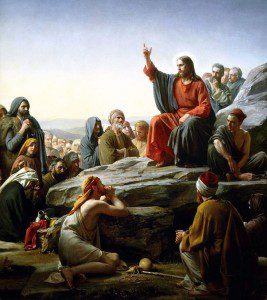 By their Fruit. The words of Jesus in Matthew 7 are worth turning to first.
By their Fruit. The words of Jesus in Matthew 7 are worth turning to first.
Watch out for false prophets. They come to you in sheep’s clothing, but inwardly they are ferocious wolves. By their fruit you will recognize them. 7:15-16
The fruit are not the elements of worldly success that we might expect, not even the elements of religious success.
Many will say to me on that day, ‘Lord, Lord, did we not prophesy in your name and in your name drive out demons and in your name perform many miracles?’ Then I will tell them plainly, ‘I never knew you. Away from me, you evildoers!’ 7:22-23
These people prophesy, drive out demons and perform miracles! In some way the power of God works through them. Yet, they are not true followers of God. The final passage sheds some light.
Therefore everyone who hears these words of mine and puts them into practice is like a wise man who built his house on the rock. 7:28
The faithful prophet, teacher, leader will hear the words of Jesus and put them into practice. The key here is the great commandment to love God with heart, mind, soul, and strength and to love your neighbor as yourself. (Mk. 12:28-31, Mt 22:24-40, Lk 10:25-28) And John 13:34-35 “A new command I give you: Love one another. As I have loved you, so you must love one another. By this everyone will know that you are my disciples, if you love one another.“
There is an interesting parallel between the words of Jesus in Matthew 7 and Paul in 1 Corinthians 13.
If I speak in the tongues of men or of angels … If I have the gift of prophecy and can fathom all mysteries and all knowledge, and if I have a faith that can move mountains, … If I give all I possess to the poor … but do not have love, I gain nothing.
The passage in Philippians 2 is also worth noting.
Do nothing out of selfish ambition or vain conceit. Rather, in humility value others above yourselves, not looking to your own interests but each of you to the interests of the others. In your relationships with one another, have the same mindset as Christ Jesus” (2:3-5)
Hard to live up to, but a command running through the New Testament.
A faithful Christian, and by corollary prophet, teacher, leader, will live out the great commandments. Among other things this means that the faithful leader will emulate the Samaritan in Luke 10, not the priest or the Levite. Care for others is preeminent. Concern for position, image, and “purity” (self-righteousness) takes a back seat – or more likely disappears altogether. True humility, valuing others above oneself, looking out for their interests, is an indispensable characteristic. Good doctrine is important, but good doctrine without love is nothing. This theme of love runs through the teaching of Jesus and through the letters of Paul, Peter, and John. (see for instance: Romans 12:10, 13:8. 1 Cor. 13, Ephesians 4:2, 1 Thess. 4:9, 2Thess. 1:3, 1 Peter 3:8, 1 John all over the place, 2 John 1:5)
And don’t forget the fruit of the Spirit “love, joy, peace, forbearance, kindness, goodness, faithfulness, gentleness and self-control.” (Gal. 5:22-23)
I could go deeper into this – and pull up a wide range of passages. No one lives up to this perfectly. False teachers aren’t those with (hopefully occasional) lapses. False teachers include those who don’t hold up these elements as the mature ideal we are called to strive after, however flawless their doctrine otherwise.
There are essentials of doctrine. But good doctrine without love is nothing but a resounding gong and a clanging cymbal.
What is the fruit of false prophets?
What is the fruit of a faithful prophet and teacher?
What is the goal of a Christian prophet, teacher, leader?
If you wish to contact me directly you may do so at rjs4mail[at]att.net.
If interested you can subscribe to a full text feed of my posts at Musings on Science and Theology.


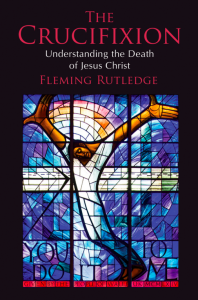

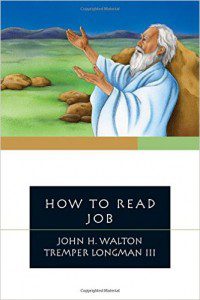
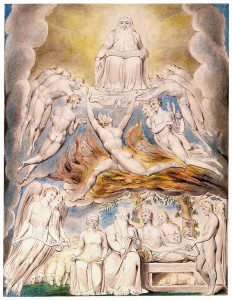



_-_Annunciation_-_Google_Art_Project-220x300.jpg)

